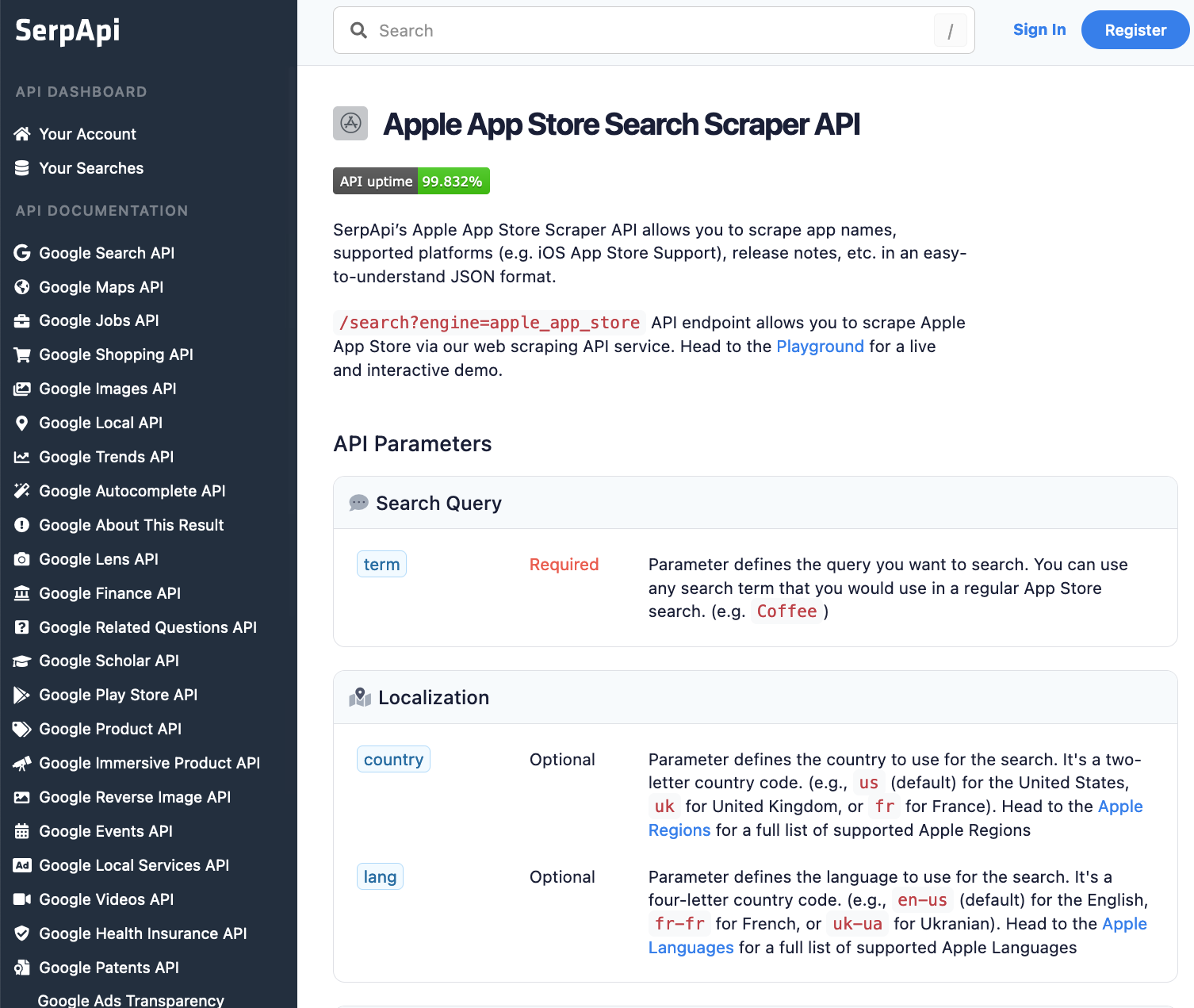The Apple App Store has millions of mobile applications for iOS and macOS users. Every app on the Apple App Store has a full description, specs on the App Store.
Scraping Apple App Store data helps you research app competitors, track app performance, identify trends in the app market.
Not only the app information, but you can also scrape app reviews and ratings to have insights into app quality, user satisfaction and areas for improvement.
Furthermore, you can scrape App Store pricing models, app discovery, conduct market analysis...
Setting up a SerpApi account
SerpApi offers a free plan for newly created accounts. Head to the sign-up page to register an account and complete your first search with our interactive playground. When you want to do more searches with us, please visit the pricing page.
Once you are familiar with all results, you can utilize SERP APIs using your API Key.

Scrape your first Apple App Store results with SerpApi
Head to the Apple App Store Results from the documentation on SerpApi for details.
In this tutorial, we will scrape organic results when searching with "video editor" keyword. The data contains: "position", "id", "title", "link", "description", "author", and more. You can also scrape more information with SerpApi.
First, you need to install the SerpApi client library.
pip install google-search-resultsSet up the SerpApi credentials and search.
from serpapi import GoogleSearch
import os, json
params = {
'api_key': 'YOUR_API_KEY', # your serpapi api
'engine': 'apple_app_store', # SerpApi search engine
'term': 'video editor'
}
To retrieve Apple App Store Results for a given search term, you can use the following code:
results = GoogleSearch(params).get_dict()['organic_results']You can store Apple App Store Results JSON data in databases or export them to a CSV file.
import csv
header = ['position', 'id', 'title', 'link', 'description', 'author']
with open('apple_appstore.csv', 'w', encoding='UTF8', newline='') as f:
writer = csv.writer(f)
writer.writerow(header)
for item in results:
print(item)
writer.writerow([item.get('position'), item.get('id'), item.get('title'), item.get('link'), item.get('description'), item.get('developer', {}).get('name')])
This example is using Python, but you can also use your all your favorite programming languages likes Ruby, NodeJS, Java, PHP....
If you have any questions, please feel free to contact me.
